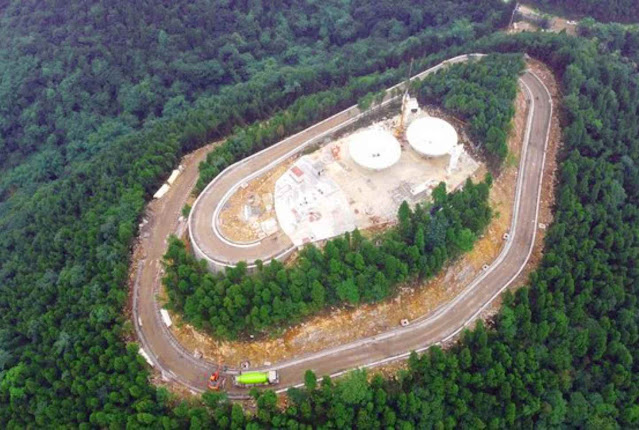The Fuyan, China’s Deep Space Radar in Chongqing may have Military Uses
pada tanggal
Thursday, July 14, 2022
BEIJING, LELEMUKU.COM - China has started building what it calls “the world’s most far-reaching radar” in the country’s southwest – a facility that could also have a military purpose, an analyst warned.
Chinese broadcaster CGTN said the new high-definition deep-space active observation facility code-named “China Fuyan,” or “Facetted Eye” for its resemblance to an insect’s eye, is being built in Chongqing Municipality.
The radar system would help “better safeguard Earth” by boosting “the country’s defense capabilities against near-earth asteroids as well as its sensing capability for the Earth-Moon system,” the state-run broadcaster said.
The Fuyan will have distributed radars with over 20 large antennas, capable of carrying out high-definition observation of asteroids within 150 million km of Earth, according to CGTN.
“If the radar is designed to observe asteroids, it would generally possess the basic capabilities for space surveillance, meaning, the ability to distinguish objects detected in space, and hence track them,” said Collin Koh, Research Fellow at the S. Rajaratnam School of International Studies in Singapore.
“Where it comes to space, the lines between civilian and military applications can be blurred,” Koh said, adding that, given China’s predilection these days to go with civil-military fusion, “it’ll be of no surprise that the radar possesses both intended civilian and military applications.”
Civil-military fusion
The project is led by a team from the Beijing Institute of Technology (BTI), in cooperation with China’s National Astronomical Observatories under the China Academy of Sciences, Tsinghua University and Peking University.
A China’s Defense Universities Tracker released by the International Cyber Policy Center at the Australian Strategic Policy Institute in 2019 listed the BTI as “one of the ‘Seven Sons of National Defense,’” and “a leading center of military research and one of only 14 institutions accredited to award doctorates in weapons science.”
It is categorized as “very high risk” and “top secret,” with 34 designated defense research areas including missile technology, radar and weapon systems.
Both Tsinghua University and Peking University are also listed in the Tracker as “very high risk” and “high risk,” respectively.
Long Teng, president of the Beijing Institute of Technology, was quoted by Chinese media as saying the Fuyan program will have three phases of construction and by the end of Phase 3 China will have “the world’s first deep-space radar with the capability to carry out 3D imaging and dynamic monitoring as well as active observation of celestial bodies throughout the inner solar system.”
The first two radars are expected to become operational by September in Chongqing.
Asian defense analyst Collin Koh said the project will add new weight to China-U.S. rivalry in space.
“When we consider the current context, while there’s no overt clarion call for China to embark on a space militarization race with the West, especially the U.S., since it has a publicly-professed line of not engaging in one, it is nonetheless very much into the game,” he said.
“And all the more so, given the broader military rivalry with the U.S., which has extended into cyber and space domains.”
The U.S. established a Space Force in 2019, creating the first new branch of the armed services in 73 years. It resulted from what the force said was “a widespread recognition that space was a national security imperative.”
China has been actively engaged in radar development projects. The commercial satellite imagery company Maxar Technologies released a satellite photo in February, believed to be of a new long-range, early warning radar that can be used to detect ballistic missiles from thousands of miles away.
The Large Phased Array Radar (LPAR) in Yiyuan County, Shandong Province, can cover Taiwan and all of Japan, according to U.S.-based Defense News.
The paper said China has other radar facilities enabling early warning coverage of the Korean Peninsula and India. (RadioFreeAsia/ BenarNews).


